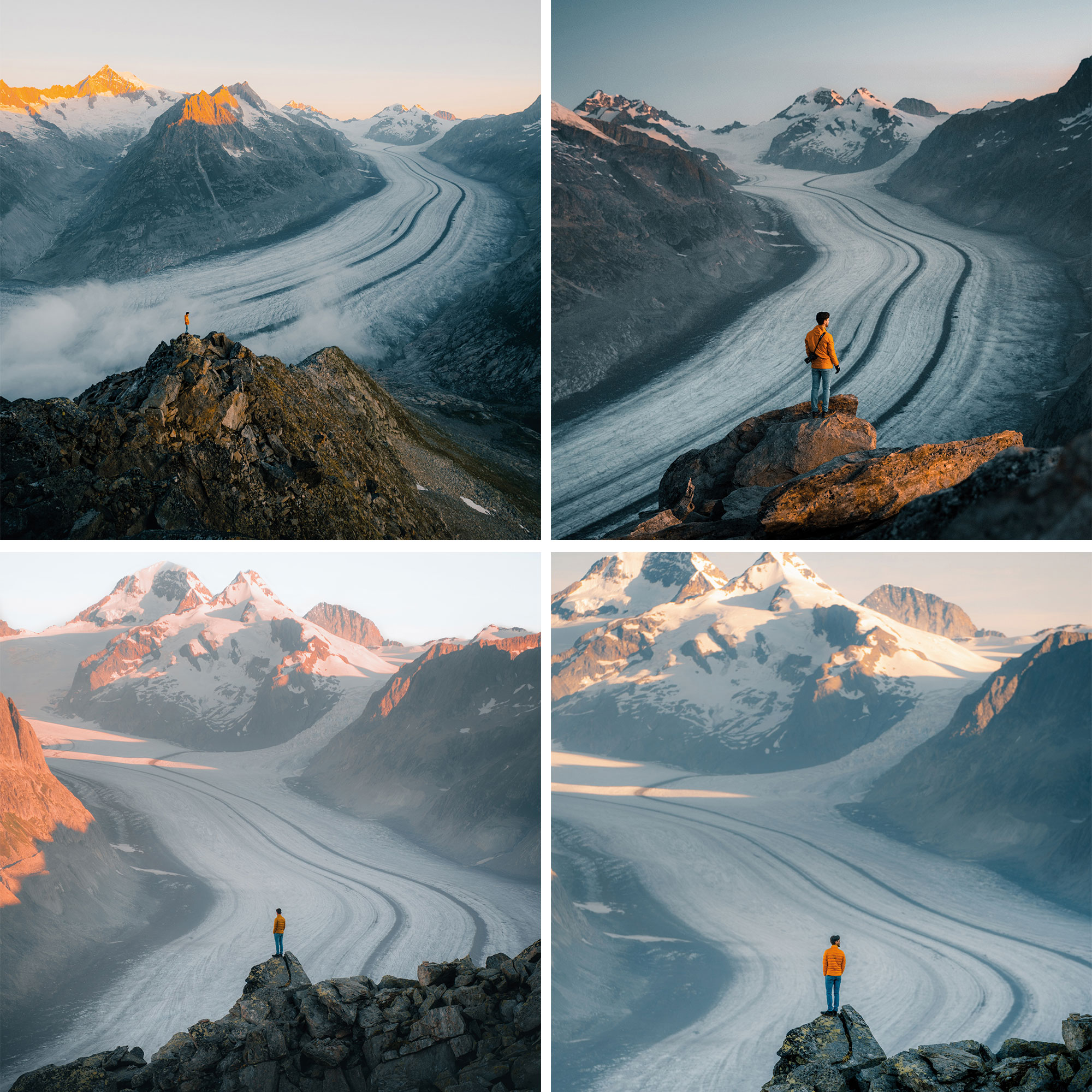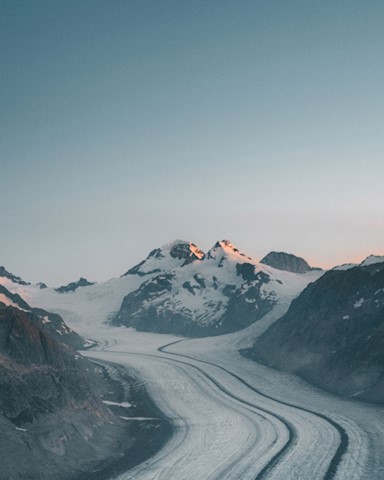Photography is seeing. What we see depends on two things: our point of view and the field of vision of our eyes. In photography, we speak of perspective and focal length. This refers to the camera position and direction of view as well as the angle of view of the lens used.
Before we press the shutter release, a multitude of decision-making processes take place in our brain: What do I want to show? How big should the person or object be in the picture? What do I want to see in the background? What do I leave out? These questions guide us – often unconsciously – in our choice of perspective and focal length.
The pictures on the right illustrate the effect that the camera’s point of view and the angle of the lens have on the effect of the picture. The motif is the same in each case: a person in a yellow jacket stands with his back to the viewer on a rock above a glacier, which together with an imposing mountain backdrop forms the background.
Ingenious effects
In the upper photos, Long-Nong first photo- graphed the person and the glacier with the wide-angle (17 mm) from far above and then with a standard focal length (40 mm) at a shorter distance from a slightly different vantage point.
The lower photos (75 mm and 110 mm) are both taken from the same vantage point. With a longer focal length, the result is a rather flat, compressed image impression with seemingly less spatial depth. It looks as if the mountains are less distant from the subject.
Long-Nong shows how this telephoto effect can be applied in practice in a Quick Tips video on our YouTube channel: he photo-graphs a person with increasing focal length. In doing so, he increases the distance to the person in such a way that he always appears the same size in the picture. The background becomes more and more condensed and becomes an imposing backdrop. This vertigo effect is also used in feature films – for example in the French black-and-white cult film La Haine from the 1990s.

Top row, left: 17-28mm at 17mm. The wide angle offers a panoramic view with great depth effect. Top row, right: 28-75mm at 40mm. With a standard lens and shorter shooting distance, the viewer gets closer to the action. Bottom row, left: 28-75mm at 75mm. With the light telephoto, the person can be staged against the mighty mountain backdrop. Bottom row, right: 70-180mm at 110mm. With a longer focal length, the person comes closer, and the distant mountains seem overwhelming.
